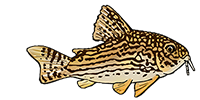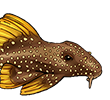https://royalsocietypublishing.org/doi/ ... .2018.0205
https://doi.org/10.1098/rstb.2018.0205
ABSTRACT
The cuckoo catfish, , is the only known obligate brood parasite among fishes, exploiting the parental care of mouthbrooding cichlids endemic to Lake Tanganyika. Comparisons of this system to brood parasitism in birds may reveal broader principles that underlie the evolution of this life-history strategy in vertebrates. However, little is known about the features of the cuckoo catfish that enable this species to successfully parasitize cichlids. Here, we examine early ontogeny of the cuckoo catfish and compare it to that of its cichlid hosts as well as a non-parasitic congener. We found that cuckoo catfish embryos develop and hatch in advance of host embryos, and begin feeding on cichlid young just as they start to hatch. Overall timing of ontogeny in the cuckoo catfish was found to be similar to that of the substrate-spawning congener , suggesting that more rapid development of the cuckoo catfish relative to cichlids is not a unique adaptation to brood parasitism. However, we found that cuckoo catfish progeny exhibit extensive morphological differences from S. lucipinnis, which may represent adaptations to brood parasitism. These life-history observations reveal both similarities and differences between the cuckoo catfish system and brood parasitism in other lineages.
This article is part of the theme issue ‘The coevolutionary biology of brood parasitism: from mechanism to pattern’.






